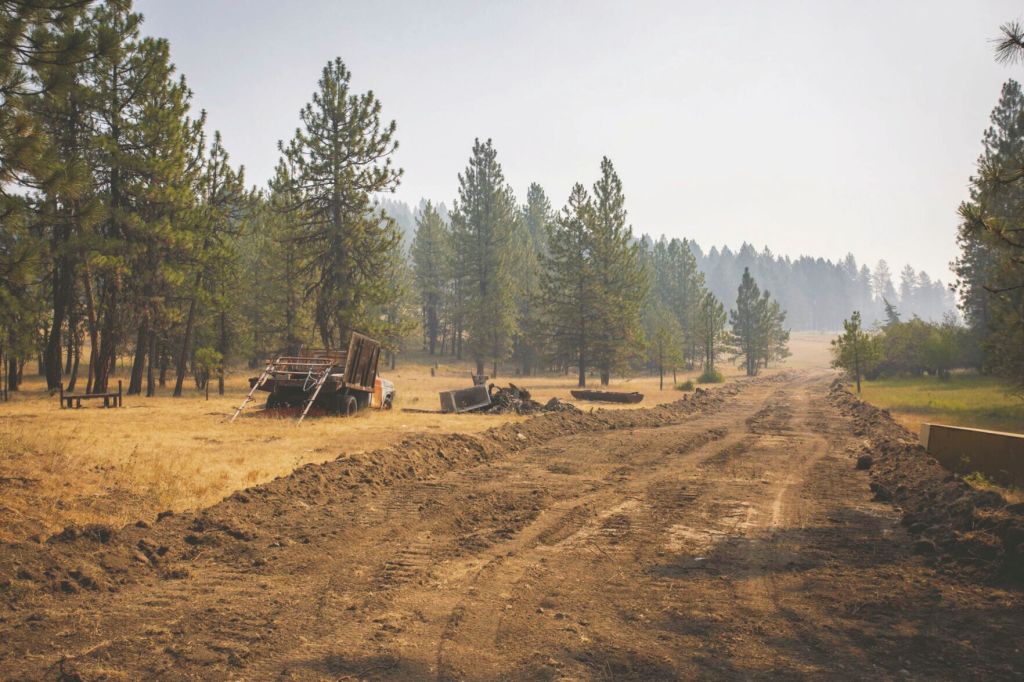Still a mystery: Cause of 2021 Elbow Creek Fire remains unknown
Published 11:00 am Saturday, July 23, 2022

- A fire line, cut with a bulldozer, crosses the forest floor near Promise on Thursday, July 22, 2021, as fire crews work to stop the spread of the Elbow Creek Fire. A year later, the cause of the fire — which consumed 22,960 acres before it was contained in mid-August — is still unknown.
WALLOWA COUNTY — As the one-year mark of the beginning of the Elbow Creek Fire passes, Wallowa County residents are still waiting for officials to determine a cause.
First reported the afternoon of July 15, 2021, about 5 miles northwest of Promise, the fire consumed 22,960 acres of the Walla Walla Ranger District in the Umatilla National Forest before it was contained in mid-August, according to Darcy Weseman, a public affairs officer for the Umatilla National Forest in Pendleton, in an email Friday, July 15.
The blaze took a few buildings in remote areas and threatened the town of Troy — which at one point was evacuated — as it burned on both sides of the Grande Ronde River and blanketed the county with smoke, although no lives were lost.
Weseman said at its peak, approximately 1,100 personnel were involved in fighting the Elbow Creek Fire, “which included a variety of resources such as overhead assigned to the incident management team, ground support and firefighters.”
An incident command site was at the Wallowa schools, where fire officials met to plan their assault on the wildfire and firefighters camped in tents on the school grounds.
Weseman placed the final cost to suppress the fire at $22.8 million.
Origin
The big questions are still about the fire’s origin.
“The goal is to answer the five W’s (who, what, where, when, why and how),” Weseman said. “The order changes in fire investigation to when, where (origin), how (cause), why (is there intent or maliciousness), who (subjects or suspects).”
As for its origin, at the time of the fire it was speculated that it could have been caused by a hot spot remaining from lightning strikes a week earlier or from rafters camping along the Grande Ronde River. But that remains under investigation.
She said there is no estimated timeline for completing the investigation.
“Fire investigation entails determining the origin area, protecting and collecting evidence, photo documentation, acquiring witness statements and more to determine the possible cause(s) of a fire,” Weseman said. “The primary goals in wildland fire investigations are to preserve the scene, determine the origin, determine the cause, determine potential responsible parties, protect evidence and to preserve the interests of all parties as far as possible. Every wildland fire investigation is unique. Timeliness of completion of an investigation (depends) on a variety of factors such as location, accessibility, evidence analysis and resources available.”
There also is a level of confidentiality investigators maintain during an active investigation “to not jeopardize the outcome,” she said.
Nature or humans?
That doesn’t appear to be so necessary when a fire is obviously lightning caused. The recent Marr Creek Fire, which burned 10 acres east of Joseph earlier this month, was quickly attributed to lightning.
Last year’s Bootleg Fire in Southern Oregon, spurred by months of drought and a blistering heat wave in June 2021, was the largest wildfire of the year, burning more than 340,000 acres — or 530 square miles — of forest and grasslands by the time Elbow Creek got going, according to The New York Times.
The U.S. Forest Service often uses back-burning to suppress fires, which increases the area of acreage burned, OSU Extension said.
Other possible reasons for an increase in total acreage burned include:
• An increase in the number of fires caused by humans.
• A history of fire suppression that has led to an increase in the amount of fuels that are connected across the landscape.
• A warmer and drier climate that is causing available dead fuels to dry out earlier in the year.
• A warmer and drier climate that reduces the moisture content of live vegetation. This increases plants’ potential to combust and adds to the available fuels on the landscape.
While many wildfires are started by lightning, the vast majority are believed to be human-caused. Fires can result when people leave campfires unattended, negligently discard cigarettes or commit intentional acts of arson.





